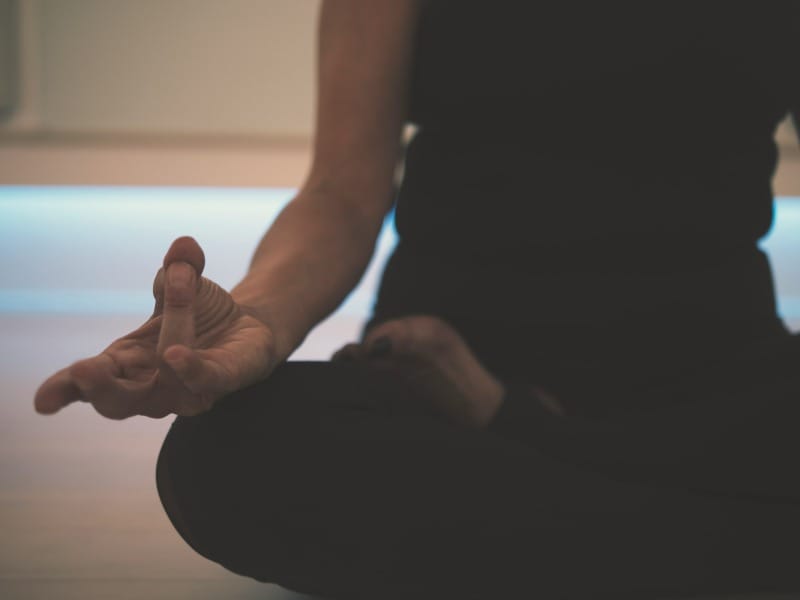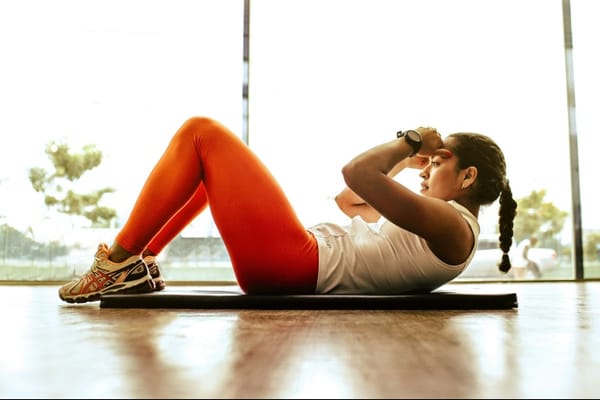Hot yoga has gained popularity as a challenging and invigorating form of exercise practiced in a steamy room. This unique twist on traditional yoga combines the benefits of yoga postures with the added intensity of heat and humidity. Let's dive into the world of hot yoga and explore its potential benefits, risks, and what you can expect from this sweat-inducing workout.
Key takeaways:
• Hot yoga is practiced in rooms heated to 80-105°F (26.7-40.6°C)
• It may improve flexibility, cardiovascular fitness, and calorie burn
• Proper hydration and listening to your body are crucial for safety
• Consult a doctor before trying hot yoga if you have health concerns
What is hot yoga?
Hot yoga refers to any yoga practice performed in a heated room, typically between 80-105°F (26.7-40.6°C) with varying levels of humidity[1]. The most well-known form is Bikram yoga, which follows a specific sequence of 26 poses in a room set to 105°F (40.6°C) with 40% humidity. However, many studios now offer their own versions of hot yoga with different sequences and temperature settings.
The idea behind hot yoga is that the heat allows for deeper stretching and increased flexibility while promoting detoxification through sweating. The challenging environment also provides a more intense cardiovascular workout compared to traditional yoga practices.

Potential benefits of hot yoga
Improved flexibility: The heat in hot yoga classes can help muscles warm up more quickly, potentially allowing for greater range of motion and deeper stretches[2].
Cardiovascular boost: The combination of yoga poses and high temperatures can elevate heart rate and provide a more intense cardiovascular workout[3].
Increased calorie burn: Hot yoga may burn more calories than traditional yoga due to the increased heart rate and metabolic demand of exercising in heat[4].
Stress relief: Like other forms of yoga, hot yoga can help reduce stress and promote relaxation through mindful breathing and meditation[5].
Detoxification: While the body's primary detoxification occurs through the liver and kidneys, sweating during hot yoga may help eliminate some toxins through the skin[6].
Safety considerations and precautions
While hot yoga can offer numerous benefits, it's essential to approach this practice with caution, especially if you're new to yoga or have underlying health conditions.
Hydration is key: The intense sweating during hot yoga can lead to dehydration if you're not careful. Drink plenty of water before, during, and after class to stay hydrated[7].
Listen to your body: It's crucial to recognize your limits and take breaks when needed. If you feel dizzy, lightheaded, or nauseous, stop exercising and move to a cooler area.
Gradual acclimation: If you're new to hot yoga, start with shorter classes or lower temperatures and gradually work your way up to more intense sessions.
Medical considerations: Consult with a healthcare professional before trying hot yoga if you have any cardiovascular issues, respiratory problems, or are pregnant[8].
What to expect in a hot yoga class
Attending your first hot yoga class can be intimidating, but knowing what to expect can help you prepare:
- Arrive hydrated and bring water to class.
- Wear lightweight, breathable clothing.
- Bring a yoga mat and towel (some studios provide these).
- Expect to sweat profusely – it's normal and part of the experience.
- The instructor will guide you through a series of poses, often with a focus on proper breathing.
- Listen to your body and take breaks as needed.

Is hot yoga right for you?
Hot yoga can be a challenging and rewarding practice, but it's not for everyone. Consider your fitness level, health status, and personal preferences when deciding whether to try hot yoga. If you enjoy the heat and are looking for a more intense yoga experience, hot yoga might be an excellent option for you.
Remember that the benefits of yoga can be achieved through various styles and temperatures. If hot yoga doesn't appeal to you or isn't suitable for your health needs, there are many other forms of yoga to explore.
In conclusion, hot yoga offers a unique and intense workout experience that combines the benefits of traditional yoga with the added challenge of heat. By approaching this practice mindfully and taking necessary precautions, you can potentially reap the rewards of improved flexibility, cardiovascular fitness, and stress relief. As with any new exercise regimen, it's essential to listen to your body and consult with a healthcare professional before starting.
Ready to explore the world of hot yoga? Find a reputable studio near you and give it a try – just remember to stay hydrated and take it at your own pace 🧘♀️
References:
- https://www.ncbi.nlm.nih.gov/pmc/articles/PMC10268545/
- https://www.medicalnewstoday.com/articles/what-is-hot-yoga
- https://www.womenshealthmag.com/fitness/a26226148/benefits-of-hot-yoga/
- https://www.cnet.com/health/fitness/benefits-of-hot-yoga/
- https://www.healthline.com/health/hot-yoga-benefits
- https://blog.mrsteam.com/hot-yoga-and-steam-make-for-more-wellness-benefits-vs-regular-yoga
- https://www.ncbi.nlm.nih.gov/pmc/articles/PMC4602249/
- https://www.rezerv.co/blogs/what-is-hot-yoga
Citations:
[1] https://www.medicalnewstoday.com/articles/what-is-hot-yoga
[2] https://www.ncbi.nlm.nih.gov/pmc/articles/PMC10268545/
[3] https://blog.mrsteam.com/hot-yoga-and-steam-make-for-more-wellness-benefits-vs-regular-yoga
[4] https://www.womenshealthmag.com/fitness/a26226148/benefits-of-hot-yoga/
[5] https://www.rezerv.co/blogs/what-is-hot-yoga
[6] https://www.cnet.com/health/fitness/benefits-of-hot-yoga/














Member discussion